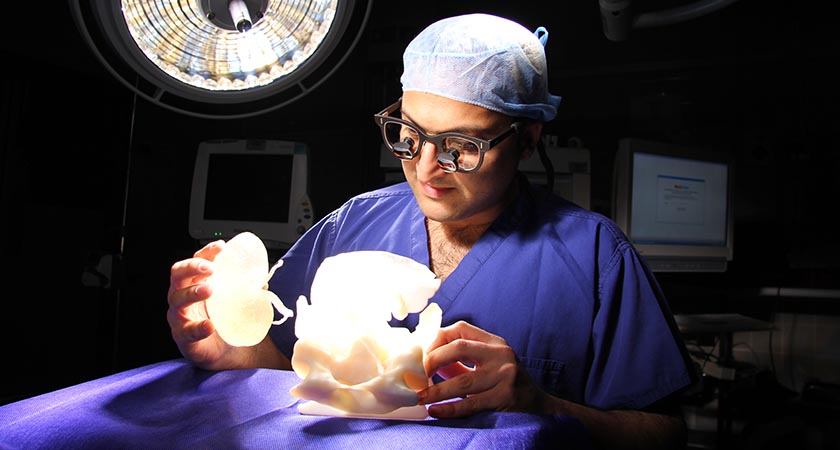AN Antrim father who donated a kidney to his young daughter in an innovative transplant operation in London that involved 3D printing has praised the life-changing procedure.
Chris Boucher and his two-year-old daughter Lucy participated in the world’s first use of the technology to aid the transplant of an adult kidney into a child when the surgery was carried out at Guy’s and St Thomas’ Hospital in November.
Two months since the operation took place, both father and daughter are recovering well.
Speaking to The Irish Post, Chris said: “We’re both doing brilliantly, we came home on Christmas Eve, and all Lucy’s check-ups have suggested that she’s doing good.
“She’s full of energy, her kidneys are working well now and she’s got an appetite. She loves mini kids pizzas and before she’d only be able to have a slice, now she finishes it all.”
Several weeks after she was born Lucy suffered heart failure when she developed supraventricular tachycardia. This meant that her heart was beating abnormally fast, leaving her body starved of oxygen.
She underwent surgery for her heart condition, but suffered kidney failure and the prospect of a lifetime of dialysis treatment.
This changed when doctors at Guy’s and St Thomas’ Hospital suggested that they could use a 3D printer to create models of Chris’ kidney and Lucy’s abdomen to accurately plan a kidney transplant and minimise the risks.
Lucy’s surgery lasted over four hours, and whilst she was in the care of fantastic doctors, led by the hospital’s consultant transplant surgeon Professor Nizam Mamode, Chris said that her heart condition had created added risks to the transplant.
But the prospect of taking part in the use of 3D printing enabling doctors to rehearse each step of the operation with the 3D models gave the family reassurance.
 Pankaj Chandak with examples of the 3D models used in the transplant operation
Pankaj Chandak with examples of the 3D models used in the transplant operation“When we were first told about the use of 3D printing for Lucy I had no idea what to expect, but my wife and I were excited by the idea,” Chris said.
“It was fascinating to see what my kidney and Lucy’s abdomen looked like. I was taken aback by the size of my kidney and how big it was and I wondered how it could possibly fit into Lucy.
“Seeing the model of her abdomen and the way the kidney was going to be transplanted inside her gave me a clear understanding of exactly what was going to happen.
“It helped ease my concerns and it was hugely reassuring to know that the surgeons could carry out such detailed planning ahead of the operation.”
During the procedure and the weeks that followed, the Boucher family, including mum Ciara, resided at the parent and sibling unit provided by the hospital.
Five-year-old son Daniel stayed with his grandparents in Antrim during the school week, flying to London to visit his family on the weekends.
“It was really tough for us but Daniel handled it really well,” Chris added. “The thing that was hard was missing his first nativity at school. But thankfully we’re now in a position where we can look forward to our first family holiday.
“We’re thinking of coming back to London to go sight-seeing this time and perhaps take the kids to Legoland.”
Pankaj Chandak, a transplant registrar at Guy’s and St Thomas’ came up with the novel idea to use 3D printouts and said that patient safety was the greatest benefit.
“The 3D printed models allow informative, hands-on planning, ahead of the surgery with replicas that are the next best thing to the actual organs themselves,” he said.
“This means surgeons are better placed than before to prepare for the operation and to assess what surgical approach will offer the greatest chance of a safe and successful transplant.”

